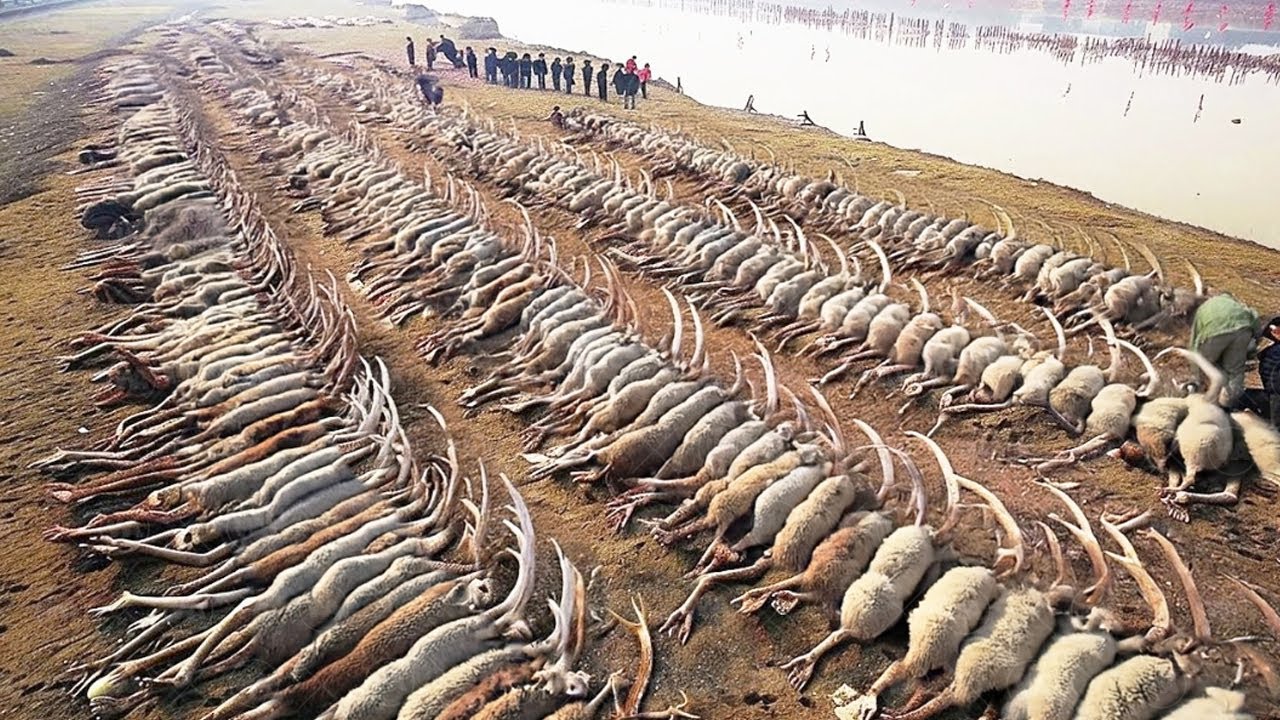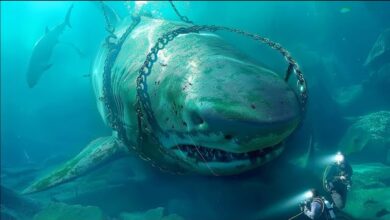They Left Thousands of Sheep on the Island With Zero Grass, and Result Was Insane

**The Strange Story of the World’s Largest Herd of Wild Sheep on Campbell Island**
Located at the southern tip of New Zealand, Campbell Island is a wild land, exposed to the cold winds from Antarctica, uninhabited, only seabirds, seals, penguins… and most surprisingly – sheep. Not just a few, but a flock of up to thousands of wild sheep, once considered the largest herd of wild sheep in the world. And the journey from domesticated animals to an independently evolving population is something that has amazed the world.
### The beginning: Humans brought sheep to the island
In 1896, the New Zealand government granted permission to lease public land for cattle grazing. A businessman named Gordon from Gisborne brought 400 sheep to Campbell Island along with materials to build a camp. After a few years, he went bankrupt and transferred the lease to Captain Tucker, who continued to bring thousands more sheep – mainly Merinos – to the island. At its peak in 1913, the flock had grown to 8,000 thanks to the relatively favorable living conditions and abundant food sources such as native mega herbs.
However, high grazing intensity led to the gradual depletion of vegetation. After profits declined and costs became out of control, the operation was abandoned in 1931. The humans withdrew, leaving behind about 4,000 sheep – creatures completely incapable of independent survival.
### Survival Disaster and Natural Selection
Domestic sheep, bred for their wool, do not shed their wool seasonally and need to be sheared by humans periodically. Otherwise, their thick wool would make it difficult for them to move, eat, and become susceptible to disease and even death. The sheep left on the island quickly faced the risk of extinction. But then something miraculous happened: a few individuals with suitable characteristics – such as less hair, better resistance – survived and reproduced.
From here, the laws of evolution began to take effect. The weak ones gradually died, leaving only the well-adapted individuals. After a few decades, a completely new flock of sheep appeared – stronger, wilder, with habits and physical characteristics clearly different from their ancestors.
### The amazing transformation
When scientists returned to the island in 1975, they were amazed by this flock. They had longer legs, higher heads, less hair on their backs due to strong winds, deformed jaws from having to tear tough weeds, and the ability to give birth standing up – the young could walk after a few minutes. In particular, they gradually began to regain the seasonal moulting instinct – a clear sign of returning to their wild ancestors.
Behaviourally, the sheep grazed almost continuously from 4am to 11pm, regardless of the cold wind. When the wind blew hard, they simply turned around and continued eating – a simple but effective adaptation that helped them survive in a harsh environment with no major predators.
### Forced cull
While impressive, the presence of feral sheep posed a major threat to Campbell Island’s fragile native ecosystem. In 1954, the island was declared a nature reserve, and the government ordered the entire herd to be removed. During inspections in 1958 and 1970, the sheep population ranged from 1,000 to over 2,500. A fence was erected to divide the island in two, and all the northern sheep were culled. By the late 1980s, the campaign ended when the last sheep was shot.
### Efforts to preserve the unique breed of sheep
Fortunately, before the sweep was completed, a team of scientists managed to rescue 10 of the healthiest individuals in 1975. They were brought to the mainland and raised as a new breed of sheep – called **Campbell Island Sheep**. However, the number of this species has never been large. Even more regrettably, in 2017, 5 rare individuals were stolen and killed. Some were pregnant, reducing the already small population to about 30.
The motive for the theft is unknown, but it is hypothesized that the perpetrators simply wanted to… eat sheep. Ironically, the meat of this breed of sheep is not tasty, and even potentially unsafe because they have never been domesticated. The loss was a huge shock to those trying to preserve this unique animal.
### An inspiring evolutionary story
If not exterminated, the wild sheep on Campbell Island could evolve into an entirely new **species** in the next few thousand years – much like the kangaroos on Kangaroo Island, Australia. Isolated from the mainland and unhunted, the kangaroos there have evolved into their own subspecies: shorter, stockier, with thicker wool – perfectly adapted to their unique habitat.
The story of Campbell’s sheep is a vivid example of the power of **natural selection**, and a reminder of the profound impact humans can have on ecosystems – whether by introducing creatures to new environments, or by withdrawing and letting them adapt.








